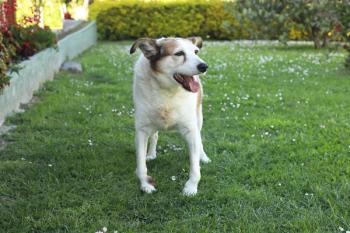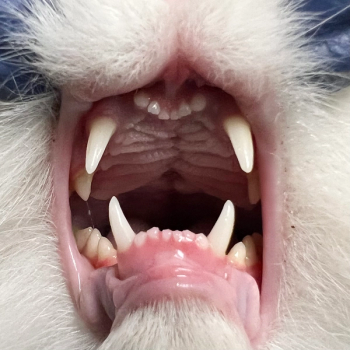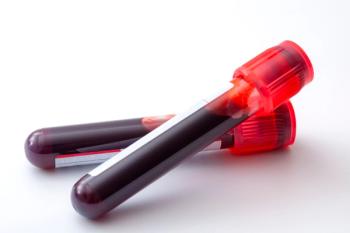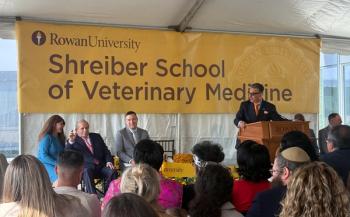
Hyaluronic acid: Examining the evidence in equine medicine
Practicing evidence-based veterinary medicine is all well and good when the evidence is clear-cut. But as articular cartilage expert Dr. Emma Adam knows, the data on use of hyaluronic acid in horses are often ambiguous.
Equine joints' intrinsic repair capacity can't keep up with athletic wear and tear forever, says equine medicine professor Dr. Emma Adam. (Getty Images/Sacha Bloor)Emma Adam, DVM, PhD, DACVIM, DACVS, assistant professor at the University of Kentucky's Gluck Equine Research Center, is a self-described “cartilage junkie.” And within five minutes of her
Sure, Dr. Adam did her PhD research in regenerative medicine as it relates to articular cartilage using RNA sequencing, but that's not what's most convincing. Instead, it's how connective tissue brings out the poet in the veterinarian.
Dr. Adam describes cartilage like some people talk of sunsets, employing words like “exquisite” and “beautiful.” And though she's been an expert on the tissue for many years, the sight of it still inspires awe.
“It's an incredible substance,” says Dr. Adam, “and if we learn to respect it much earlier on in the disease process, we'll have a better outcome in the end.”
Respect begins with acknowledging articular cartilage's significance, as well as its fragility.
“Cartilage allows bones to slide seamlessly over one another, like running your finger over the top of an ice cube,” Dr. Adam explains. “It's a shock absorber with exquisite biomechanical properties-properties we lust after for the rest of our lives.”
However, its intrinsic repair capacity is unable to keep pace with an equine athlete's wear and tear.
“Growth factors within cartilage diminish with age,” she continues. “They also, ironically, get held onto harder by the binding proteins within that tissue. Sadly, the chondrocytes are stuck in little coffins (called ‘lacunae') that prevent them from doing innovative and wonderful things. Cartilage is a tissue that's set up for a lifetime of use but not regeneration.”
An education in lubrication
In researching HA and its role in treating horses with joint damage and disease, Dr. Adam first looked to machines for a better understanding of how lubrication works. In the engineering world, lubrication is designed to decrease the frictional force between parts of a machine that are in contact-and that's exactly what you want in joints.
“When friction causes wear and tear among moving parts of machinery in contact, the machine loses its efficiency and becomes useless. We need to keep the moving parts apart,” Dr. Adam says. “And we need to reduce the maintenance and running costs of the machine. That's certainly what my clients want out of me.”
In equine joints, Dr. Adam says, boundary lubrication is the ally. And maintaining the normal function of the synovial membrane (the site of synovial fluid synthesis) is the one thing equine practitioners can do to maintain homeostasis within a given joint.
“Does that mean adding corticosteroids and so on?” she asks. “The problem with that is we've already let the horse out of the stable, so to speak. We need to bring the realm of joint health back to us. When these horses first start getting little bits of effusion but aren't actually getting lame, that is when we have synovial capsule inflammation, and that is when we can do the most good when we start to look at things like hyaluronic acid and lubrication.”
Examining the evidence
Dr. Adam has spent hours upon hours reviewing the literature on HA to better understand its use as a treatment modality for horses with joint damage or disease. But that doesn't mean she's obtained clear-cut answers. “The data are the data, and we're left to come up with explanations for it,” she says.
Here are some of the studies Dr. Adam has wrestled with, along with her thoughts about what to take away from each.
Polyglycan-SA concerns. According to Dr. Adam, one could rationally make a case for Polyglycan-SA (hyaluronic acid-chondroitin-glucosamine-Bimeda) as being a magic bullet for joints. But in this particular study, researchers found no difference in lameness between treated and untreated horses.1 The radiographic scores were actually worse for the treated group, synovial fluid parameters were the same as in untreated horses, and the joint pathology was higher in treated horses.
“I would caution you about this,” says Dr. Adam. “There's a lot we don't understand about the generation of joint pathology.” Nevertheless, Dr. Adam was immensely disappointed with the results of this study.
“I thought I'd been doing this wonderful thing with Polyglycan-SA,” she explains. “I still use it and like it in joints, but I don't use it intravenously as a prophylactic or a measure to help osteoarthritis.”
Corticosteroid alone or with HA. The next study Dr. Adam discussed involved 80 client-owned horses from 13 clinics.2 “Any time you have 13 different clinics involved in a study, it makes me pucker,” admits Dr. Adam. “It's so difficult to do good clinical trials, particularly when you have multiple centers.”
Horses in the study had to be at a 2 or higher on the 0-5 lameness scale developed by the American Association of Equine Practitioners (AAEP). (See “AAEP lameness scale” below for more information.) They also had to have only one affected joint, and they had to have effusion.
AAEP lameness scale
The American Association of Equine Practitioners (AAEP) has developed a
0. Lameness is not perceptible under any circumstances.
1. Lameness is difficult to observe and is not consistently apparent, regardless of circumstances (e.g. under saddle, circling, inclines, hard surface).
2. Lameness is difficult to observe at a walk or when trotting in a straight line but consistently apparent under certain circumstances (e.g. weight-carrying, circling, inclines, hard surface).
3. Lameness is consistently observable at a trot under all circumstances.
4. Lameness is obvious at a walk.
5. Lameness produces minimal weight bearing in motion or at rest or a complete inability to move.
“You know if these horses have persistent effusion and they're a 2 or higher on the lameness scale, they already have advanced disease,” says Dr. Adam. “You also know that if the average age is 13, there's a smorgasbord of wear and tear going on in these joints.”
While 80 horses may seem like a lot, Dr. Adam notes that “when you spread them out over all the different joints, … the power of such a study, valiant effort though it was, is diminished.”
However, she commends the authors for doing the work. “I think this is a brave study to do,” says Dr. Adam, “and what came out of it were some very, very interesting questions.”
The authors found that horses treated with intra-articular triamcinolone acetate (TA) alone responded better at three weeks than those treated with TA plus HA. The combination of TA with HA was associated with a lower short-term clinical success rate and a similar medium-term outcome.
“I don't quite know what to make of it,” Dr. Adam admits. “There might be something going on with TA and HA, but we just don't know. The saddest part about this study, and the reason I'm most worried about it, is that at three months only half of those horses were back to work. So to me that means we have some serious disease going on.”
Thus, according to Dr. Adam, the effect of corticosteroids combined with other products is an area of research to watch in the future.
HA administered intravenously. No one remembers this study from Colorado State University because it was conducted such a long time ago-back when Bayer was ready to market its new intravenous (IV) HA product, Legend, says Dr. Adam.3
“On day zero, they performed surgery to create a small carpal bone chip-a 3- to 4-mm wobbly chip-which is a model of synovitis and joint deterioration,” she says. “And then at day 15, they started working the horses on the treadmill in cohort groups.”
The horses worked out on a treadmill five days a week. One group was given 4 mL of the IV formulation of Legend on days 13, 20 and 27. On day 72-that is, 45 days after the final dose-the joints were examined.
“The lameness in these horses decreased by 1 to 1.5 grade points on the AAEP's 0-5 scale,” says Dr. Adam. “The people judging these horses were blinded. I've actually asked them on more than one surreptitious occasion, and they still say the same.”
Moreover, the horses that had received the three HA injections had significantly lower prostaglandin E2 concentrations within their synovial fluid, and on histologic evaluation, their synovial hypertrophy scores were reduced. Synovial vascularity was also reduced.
“I ask the same question everybody else asks,” explains Dr. Adam. “‘IV HA? How in the heck can that happen? The half-life is four minutes! What's that doing?' Well, we don't really know, but the data are the data and we're left to try to find an explanation.”
Chomping at the bit for more equine articles?
There's no need to hold your horses. Visit dvm360's
According to Dr. Adam, one possible explanation for the results of the previous study is that the IV HA may stimulate endogenous HA synthesis.
PRP-a positive feedback loop? “Buried in the discussion of a paper by a group at Cornell, Lisa Fortier, DVM, PhD, the senior researcher who was the first person to start using platelet-rich plasma [PRP] on tendon explants, suggested that the expression of trophic growth factors in the untreated tendon explants sort of plateaued off,” explains Dr. Adam.4 “They were damaged. There were no trophic factors coming. But when they subjected these explants to PRP, they found that not only did the explant anabolic genes stay higher, they stayed higher for longer than could be predicted from the presence of the original PRP.”
The suggestion? A positive feedback loop had been kicked into place.
“Now I'm certainly not saying that's for sure what's happening here,” she continues, “but what explanation do we have for the idea that something with a four-minute half-life, like IV HA, can change the effect of lameness 45 days after the last dose when it's an intravenous product of only 4 mL?”
A horse is like a bar of soap
When it comes down to what to use and when to use it, Dr. Adam says equine practitioners must remember that time is not on their side.
“I always tell my clients-especially those who constantly want to do sliding stops, canter-pirouettes and jumps-that the use of their horse is similar to the use of a bar of soap,” she explains. “A bar of soap has only so many rubs before it's used up. Likewise, once you've used up the intrinsic repair capacity of the horse's cartilage, it doesn't regenerate itself.”
For Dr. Adam, this means it's important for equine practitioners to start offsetting the negative effects of exercise-potentially prophylactically and potentially with IV HA-to reduce the deleterious effects on the cartilage and to control harmful inflammation.
“I would encourage equine practitioners to demand evidence and to think critically,” she says in closing. “There's still a lot we don't know because the research is difficult to perform. But just because we don't fully understand it doesn't mean we can't use it judiciously.”
References
1. Frisbie DD, Mcllwraith CW, Kawcak CE, et al. Efficacy of intravenous administration of hyaluronan, sodium chondroitin sulfate, and N-acetyl-d-glucosamine for prevention or treatment of osteoarthritis in horses. Am J Vet Res 2016;77(10):1064-1070.
2. De Grauw JC, Visser-Meijer MC, Lashley F, et al. Intra-articular treatment with triamcinolone compared with triamcinolone with hyaluronate: A randomised open-label multicentre clinical trial in 80 lame horses. Equine Vet J 2016;48(2):152-158.
3. Kawcak CE, Frisbie DD, Trotter GW, et al. Effects of intravenous administration of sodium hyaluronate on carpal joints in exercising horses after arthroscopic surgery and osteochondral fragmentation. Am J Vet Res 1997;58(10):1132-1140.
4. Boswell SG, Schnabel LV, Mohammed HO, et al. Increasing platelet concentrations in leukocyte-reduced platelet-rich plasma decrease collagen gene synthesis in tendons. Am J Sports Med 2014;42(1):42-49.
Newsletter
From exam room tips to practice management insights, get trusted veterinary news delivered straight to your inbox—subscribe to dvm360.






